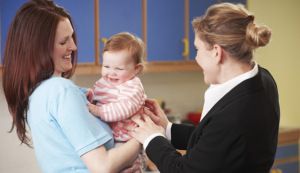News
Death of the dagpleje: Far fewer parents using the services of the ‘Surrogate Mor’ next door
This article is more than 4 years old.
Every street used to have them, but they’re a dying breed, with parents preferring to send their loved ones to daycare institutions instead

Dagplejer tend to look after very young children (photo: bronderslev.dk)
Far fewer children under the age of three are looked after by dagplejer compared to a decade ago.
Typically ‘dagplejer’ are supported by the state to look after infants at their home – often while the kiddies are waiting for a place at a daycare institution – and they tend to be more popular in areas with low populations where there are limited daycare services.
They often work in pairs and look after six infants between them.
Virtually extinct in the capital
In Denmark, generous parental leave support ensures that most children stay at home until the age of 12 months – only a minority are placed at baby creches – before being placed in a vuggestuen (nursery) until they are old enough to attend a børnehallen (kindergarten), normally by the age of three.
Figures released by Danmarks Statistik reveal a sixth of all children under the age of three were looked after by a dagpleje in 2019, compared to a third a decade ago. This represents a fall from 62,000 to 32,000 infants.
However, in Frederiksberg and Copenhagen Municipalities, only 1 and 2 percent respectively of all children under the age of three were looked after by a dagpleje in 2019.
Harder to recruit them
“When we compare the number of children looked after by a dagpleje with the population density in the municipalities, we see that children in municipalities with low population densities tend to be more often looked after by a dagpleje,” explained Bjarne Mann, the chief consultant at Danmarks Statistik.
“For some municipalities, there may be recruitment difficulties as they may have difficulty finding enough dagplejer.”
The number of state-sponsored dagplejer in Denmark grew massively in the 1960s due to the rise in women participating in the labour market.










































